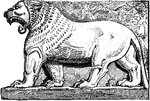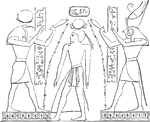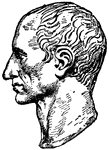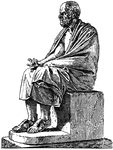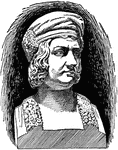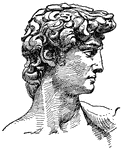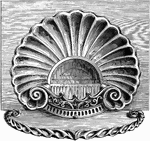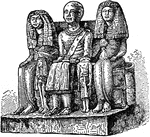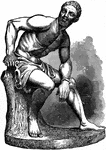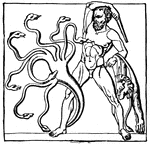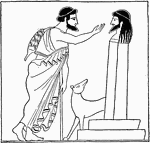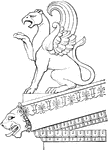
Acroteria from the Temple of Minerva at Ægina
On the apex and two lower angles of the pediment were introduced acroteria, sometimes ornaments of flowers…
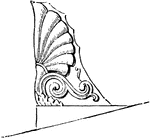
Acroteria, or Roof-Pedestal, from the Temple of Theseus at Athens
On the apex and two lower angles of the pediment were introduced acroteria, sometimes ornaments of flowers…
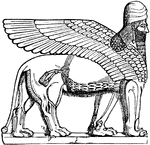
Alto-Rilievo
"The term used in sculpture to designate that mode of representing objects by which they are made to…
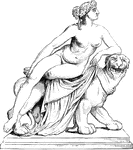
Ariadne
"Johann Heinrich von Dannecker, of Stuttgart, another great sculptor, excelled in portrait-statues,…

Mourning Athena
"A tablet of Pentelic marble. Athena, leaning on her spear, is gazing with downcast head at a grave…

Aztec Imitation of Ganesha - Elephant-faced god
An Aztec sculpture of an elephant-faced god, supposedly an imitation of the Hindu god, Ganesha.
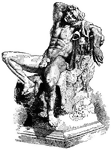
The Barberini Faun, or Drunken Satyr
Illustration of the life-size marble statue located in Munich, Germany. It was found in 1620 in a moat…

Assyrian Hunting Bas-relief
"Assyrian bas-relief. Part of a Lion-hunt, from Nimrud." —D'Anvers, 1895

Bust of Man
A bust is a sculpted or cast representation of the upper part of the human figure, depicting a person's…
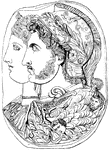
Gonzaga Cameo
"The Gonzaga Cameo. Ptolemy I. and Eurydice. Roman. In the St. Petersburg Museum." —D'Anvers,…

Bust of Caracalla
Caracalla (April 4, 188 – April 8, 217. Caracallus ), born Lucius Septimius Bassianus and later called…
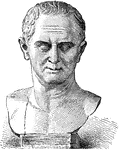
Marcus Tullius Cicero
Marcus Tullius Cicero (106-43 BC) was a Roman philosopher, statesman, and lawyer.
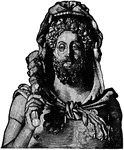
Bust of Commodus
Lucius Aurelius Commodus Antoninus (31 August 161 – 31 December 192) was a Roman Emperor who ruled…
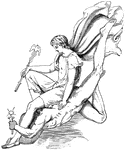
Sculpture of Comus
The sculpture of comus depicts comus (God of festivities) with the attending spirit descending on a…

The Discus Thrower
Also known as Discobolus. The Discus Thrower is a famous, ancient bronze statue that demonstrates a…
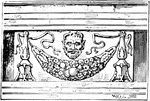
Encarpus
"In architecture, a sculptured ornament in imitation of a garland or festoon of fruits, leaves, or flowers,…
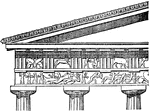
Doric Entablature
"Doric Entablature. E, entablature: a, epistyle or architrave; b, frieze; c, cornice." -Whitney, 1911
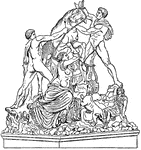
Farnese Bull
A very large sculpture crafted by Apollonius of Tralles and his brother Tauriscus representing the myth…
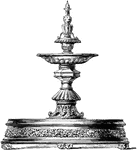
Water Fountain
This water fountain is a 17th century design that is made out of well glazed pottery. It is decorated…
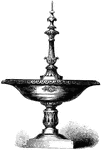
Water Fountain
This water fountain is a 17th century design that is made out of well glazed pottery. It is decorated…
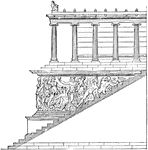
Frieze of Altar at Pergamon
The stairway of the great altar at Pergamon in Ancient Greece shows a frieze. A frieze is a sculpture…

Assyrian Fringe
"Assyrian Fringes, from ancient bas-reliefs. Fringe: an ornamental bordering formed of short lengths…

Assyrian Fringe
"Assyrian Fringes, from ancient bas-reliefs. Fringe: an ornamental bordering formed of short lengths…

Galleries of Cathedral of Amiens
"Galleries of the west front of the Cathedral of Amiens, 13th century, illustrating treatment of galleries…

The Dying Gaul
A Roman copy of an ancient Greek sculpture. The copy is made of marble, while the lost original sculpture…
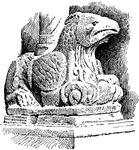
Griffin
"Medieval Griffin. Porch of the Duomo, Verona, Italy. GRIFFIN. In mythology, an imaginary animal supposed…

Statue of Patrick Henry at Richmond, VA
Statue of Patrick Henry, American Revolutionary, in Richmond, Virginia.

Farnese Hercules
"The Farnese Hercules (Colossal). Found in 1540 in the Baths of Caracalla. In the Naples Museum." —D'Anvers,…
